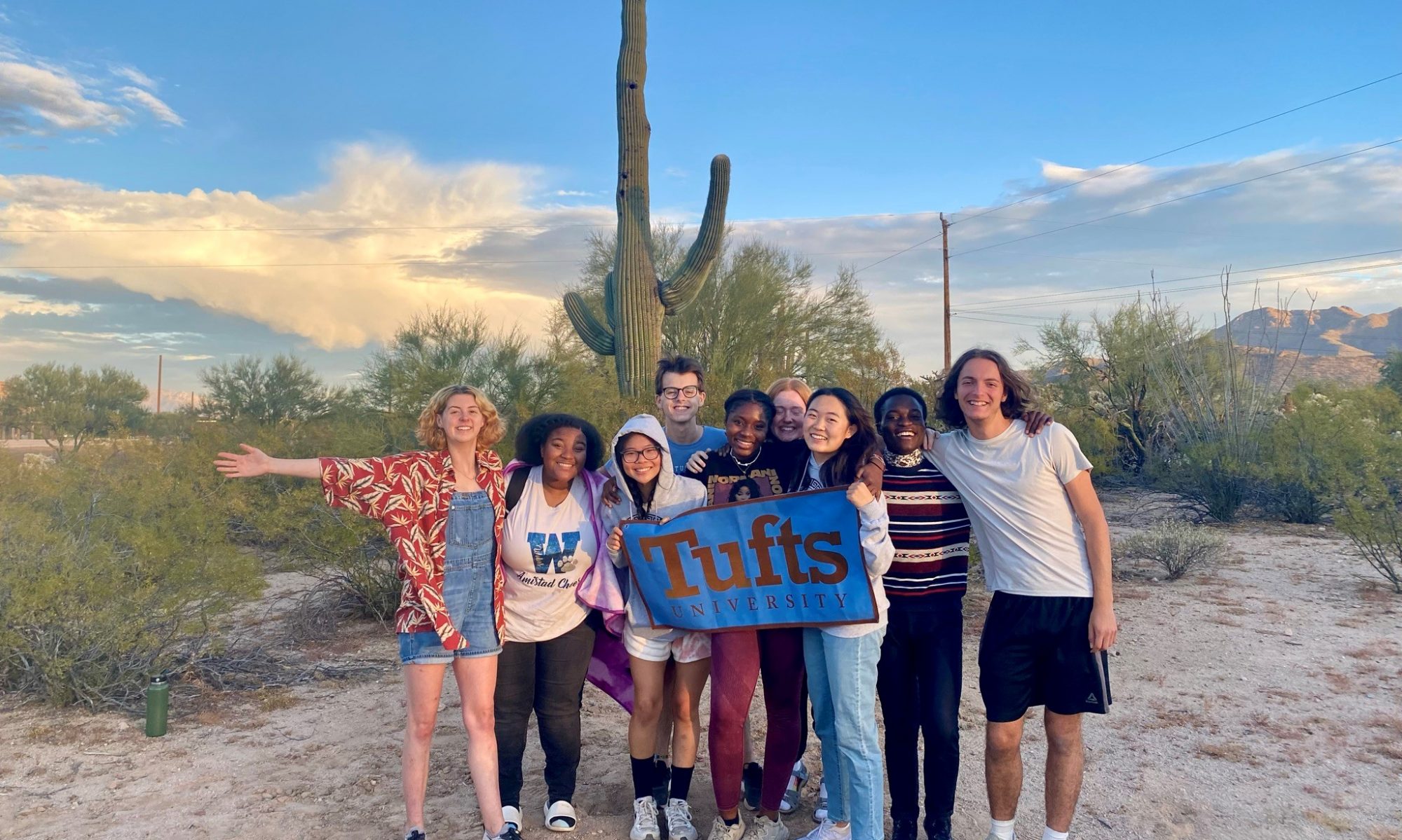by Loey, Civic Semester Participant

This past week we visited Borderlands Restoration Network (BRN) which is an organization based in Patagonia, Arizona. From November 9th to 12th, we worked with various programs and branches of BRN which all focused around preserving and restoring close to 1800 acres of land across the U.S.-Mexico border with a strong foundation of permaculture and sustainability. Throughout our time in the Patagonia region, we camped within land owned by the organization called Deep Dirt Institute.
When we arrived at our campsite in the afternoon, we were greeted by a woman named Juliette who is the education director at Borderlands Restoration Network. We began our time at the organization with an informal tour, where we learned about the history of the Deep Dirt Institute and what BRN does. Where we had the privilege of camping was a project 25 years in the making by a woman named Kate and her husband. While there was no electricity, there was a make-shift kitchen where we could cook, tables where we ate and played cards, and a composting toilet. This system was a great learning opportunity for a lot of us. From traditional urbanite flooring sourced from local projects to plants growing within scattered bathtubs within the boundaries, this place was a beautiful and magical culmination of what Juliette explained to be permaculture. In short, permaculture is a method of cultivating and managing land using whole systems thinking that tries to intertwine all aspects of nature’s being. Examples that Juliette talked about were the way that they source their water from a well, the use of solar energy, regenerative agriculture, and water shed restoration. A water shed is a geographical place where water is collected from different areas to a common outlet, and their protection helps save endangered native species and natural habitats. Continuing, the emphasis on permaculture also had to do with the unbelievable diversity of the land. BRN is home to 350 different species of bees alone, and there is even more population diversity that is just as astonishing. Juliette explained to us that geologically there are at least five different ecosystems converging in this one area. The Borderlands are a migratory pathway in many ways, not only for humans. This land was historically a crossroads for a plethora of different species, human or otherwise, and the impact of the border has been felt negatively by the entire ecosystem. Staying on the land that we were learning from made us feel all the more connected to the people and this experience.
After speaking with Juliette and receiving a wealth of background and information, we met with a woman named Tess who manages the water restoration branch of BRN. She taught us about just a fraction of some of the harm that humans have done to this planet, including mining and the overgrazing of land due to cattle. What I enjoyed most from Tess was that she approached nature and conservancy through ideas of reciprocity and mutual respect. For the rest of the day, we worked on building rock structures incrementally through streams in order to prevent erosion. At this site we met Eduardo, Zach, and Nicole, who taught us the intricate work of creating these structures. We were shown how pivotal these erosion control structures are to the water shed’s preservation, and how closely these engineering projects can work and intertwine with human-made art within natural habitats.
Originally posted here.
